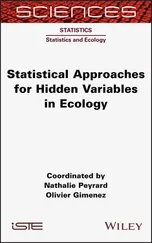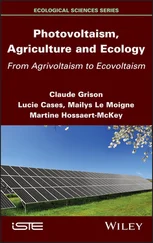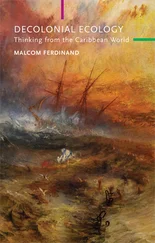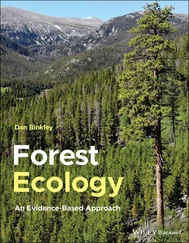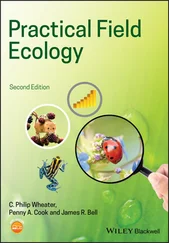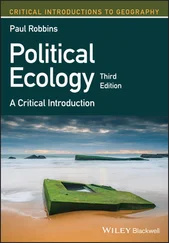1 Cover
2 Title Page
3 Copyright Page
4 Dedication Page
5 PrefaceA science for everybody – but not an easy science Thirty‐four years on: the urgent problems facing us About this fifth edition Technical and pedagogical features Acknowledgments
6 Introduction: Ecology and its DomainDefinition and scope of ecology Explanation, description, prediction and control Pure and applied ecology
7 Chapter 1: Organisms in their Environments: the Evolutionary Backdrop1.1 Introduction: natural selection and adaptation 1.2 Specialisation within species 1.3 Speciation 1.4 The role of historical factors in the determination of species distributions 1.5 The match between communities and their environments 1.6 The diversity of matches within communities
8 Chapter 2: Conditions2.1 Introduction 2.2 Ecological niches 2.3 Responses of individuals to temperature 2.4 Correlations between temperature and the distribution of plants and animals 2.5 pH of soil and water 2.6 Salinity 2.7 Hazards, disasters and catastrophes: the ecology of extreme events 2.8 Environmental pollution 2.9 Global change
9 Chapter 3: Resources3.1 Introduction 3.2 Radiation 3.3 Water 3.4 Carbon dioxide 3.5 Mineral nutrients 3.6 Oxygen – and its alternatives 3.7 Organisms as food resources 3.8 A classification of resources, and the ecological niche 3.9 A metabolic theory of ecology
10 Chapter 4: Matters of Life and Death4.1 An ecological fact of life 4.2 Individuals 4.3 Counting individuals 4.4 Life cycles 4.5 Dormancy 4.6 Monitoring birth and death: life tables, survivorships curves and fecundity schedules 4.7 Reproductive rates, generation lengths and rates of increase 4.8 Population projection models
11 Chapter 5: Intraspecific Competition5.1 Introduction 5.2 Intraspecific competition, and density‐dependent mortality, fecundity and growth 5.3 Quantifying intraspecific competition 5.4 Intraspecific competition and the regulation of population size 5.5 Mathematical models: introduction 5.6 A model with discrete breeding seasons 5.7 Continuous breeding: the logistic equation 5.8 Individual differences: asymmetric competition 5.9 Self‐thinning
12 Chapter 6: Movement and Metapopulations6.1 Introduction 6.2 Patterns of migration 6.3 Modes of dispersal 6.4 Patterns of dispersion 6.5 Variation in dispersal within populations 6.6 The demographic significance of dispersal 6.7 The dynamics of metapopulations
13 Chapter 7: Life History Ecology and Evolution7.1 Introduction 7.2 The components of life histories 7.3 Trade‐offs 7.4 Life histories and habitats 7.5 The size and number of offspring 7.6 Classifying life history strategies 7.7 Phylogenetic and allometric constraints
14 Chapter 8: Interspecific Competition8.1 Introduction 8.2 Some examples of interspecific competition 8.3 Some general features of interspecific competition – and some warnings 8.4 The Lotka–Volterra model of interspecific competition 8.5 Consumer‐resource models of competition 8.6 Models of niche overlap 8.7 Heterogeneity, colonisation and pre‐emptive competition 8.8 Apparent competition: enemy‐free space 8.9 Ecological effects of interspecific competition: experimental approaches 8.10 Evolutionary effects of interspecific competition
15 Chapter 9: The Nature of Predation9.1 Introduction 9.2 Foraging: widths and compositions of diets 9.3 Plants’ defensive responses to herbivory 9.4 Effects of herbivory and plants’ tolerance of those effects 9.5 Animal defences 9.6 The effect of predation on prey populations
16 Chapter 10: The Population Dynamics of Predation 10.1 The underlying dynamics of consumer‐resource systems: a tendency towards cycles 10.2 Patterns of consumption: functional responses and interference 10.3 The population dynamics of interference, functional responses and intimidation: equations and isoclines 10.4 Foraging in a patchy environment 10.5 The population dynamics of heterogeneity, aggregation and spatial variation 10.6 Beyond predator–prey
17 Chapter 11: Decomposers and Detritivores11.1 Introduction 11.2 The organisms 11.3 Detritivore–resource interactions
18 Chapter 12: Parasitism and Disease12.1 Introduction: parasites, pathogens, infection and disease 12.2 The diversity of parasites 12.3 Hosts as habitats 12.4 Coevolution of parasites and their hosts 12.5 The transmission of parasites amongst hosts 12.6 The effects of parasites on the survivorship, growth and fecundity of hosts 12.7 The population dynamics of infection 12.8 Parasites and the population dynamics of hosts
19 Chapter 13: Facilitation: Mutualism and Commensalism13.1 Introduction: facilitation, mutualists and commensals 13.2 Commensalisms 13.3 Mutualistic protectors – a behavioural association 13.4 Farming mutualisms 13.5 Dispersal of seeds and pollen 13.6 Mutualisms involving gut inhabitants 13.7 Mutualism within animal cells: insect bacteriocyte symbioses 13.8 Photosynthetic symbionts within aquatic invertebrates 13.9 Mutualisms involving higher plants and fungi 13.10 Fungi with algae: the lichens 13.11 Fixation of atmospheric nitrogen in mutualistic plants 13.12 Models of mutualisms
20 Chapter 14: Abundance14.1 Introduction 14.2 Fluctuation or stability? 14.3 The demographic approach 14.4 The mechanistic approach 14.5 The time series approach 14.6 Population cycles and their analysis 14.7 Multiple equilibria: alternative stable states
21 Chapter 15: Pest Control, Harvesting and Conservation15.1 Managing abundance 15.2 The management of pests 15.3 Harvest management 15.4 Conservation ecology
22 Chapter 16: Community Modules and the Structure of Ecological Communities16.1 Introduction 16.2 The influence of competition on community structure 16.3 The influence of predation on community structure 16.4 Plurality in the structuring of communities
23 Chapter 17: Food Webs 17.1 Food chains 17.2 Food web structure, productivity and stability 17.3 Regime shifts
24 Chapter 18: Patterns in Community Composition in Space and Time 18.1 Introduction 18.2 Description of community composition 18.3 Community patterns in space 18.4 Community patterns in time 18.5 The mechanisms underlying succession 18.6 Communities in a spatiotemporal context 18.7 The metacommunity concept
25 Chapter 19: Patterns in Biodiversity and their Conservation19.1 Introduction 19.2 A simple model of species richness 19.3 Spatially varying factors that influence species richness 19.4 Temporally varying factors that influence species richness 19.5 Habitat area and remoteness: island biogeography 19.6 Gradients of species richness 19.7 Selecting areas for conservation 19.8 Managing for multiple objectives – beyond biodiversity conservation
26 Chapter 20: The Flux of Energy through Ecosystems20.1 Introduction 20.2 Patterns in primary productivity 20.3 Factors limiting primary productivity in terrestrial communities 20.4 Factors limiting primary productivity in aquatic communities 20.5 The fate of energy in ecosystems
27 Chapter 21: The Flux of Matter through Ecosystems21.1 Introduction 21.2 Nutrient budgets in terrestrial communities 21.3 Nutrient budgets in aquatic communities 21.4 Global biogeochemical cycles
28 Chapter 22: Ecology in a Changing World22.1 Introduction 22.2 Climate change 22.3 Acidification 22.4 Land‐system change 22.5 Pollution 22.6 Overexploitation 22.7 Invasions 22.8 Planetary boundaries 22.9 Finale
29 References
30 Organism Index
31 Subject Index
32 End User License Agreement
1 Chapter 1 Table 1.1 Estimated annual costs (billions of US dollars) associated with damage ...
2 Chapter 4 Table 4.1 Two cohort life tables for the annual plant Gilia capitata . One is for ... Table 4.2 A cohort life table for female yellow‐bellied marmots, Marmota flaviven... Table 4.3 A cohort life table and a fecundity schedule for the barnacle Balanus g...
Читать дальше




